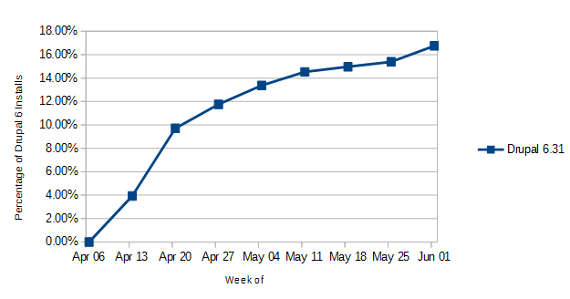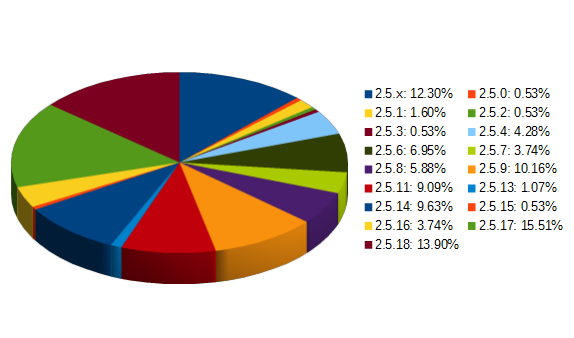On this blog we focus a lot on the large problem of software on websites not being kept up to date. But the importance of keeping software up to date is misunderstood or misused, leading to more security problems. What we often see with web hosts, and to a lesser degree security companies, is that they tell people that their hacked website must have been hacked due to outdated software. There are a couple of major problems with this. First, websites are often are hacked due to reasons other than outdated software. It could be caused by malware on the computer of someone involved in the website, poor security at the web host, a vulnerability that even exist in the latest version of software, or a variety of other issues. The second major problem is that if you assume that the website was hacked due to outdated software and it wasn’t then the vulnerability doesn’t get fixed and the website could get hacked again (which based on the people that come to us to re-clean hacked websites, happens often). Below we dive into more detail of several of the important points on understanding what role outdated software plays in hacks.
Most Vulnerabilities Are Not Likely to Lead to Your Website Being Hacked
If you look at popular software like Drupal, Joomla, and WordPress they release security updates on a fairly regular basis. While you should be applying those security updates, it is important when dealing with a hacked website to understand that most security vulnerabilities fixed in software are not likely to lead to your website being hacked. For the average website, hackers will only try to hack it using very basic hacks that don’t rely on human interaction, so vulnerabilities that would require targeting your website are unlikely to be used. There are other vulnerabilities that would need to be combined with another vulnerability to be successfully exploited and yet other security vulnerabilities that couldn’t be used to hack your website, for example an old WordPress vulnerability allowed users to view other user’s trashed posts.
When it comes to Drupal, Joomla, and WordPress, only with Joomla have we seen a new vulnerability in the software successfully be exploited in the past few years. So with Drupal and WordPress if somebody is telling you an outdated version caused the hack chances are they are wrong. The vulnerabilities in Joomla could impact websites running 1.6.x, 1.7.x, and 2.50-2.5.2 if user registration is enabled or versions 1.5.x, 1.6.x, 1.7.x, 2.5.0-2.5.13, 3.0.x, and 3.1.0-3.1.3 if untrusted users are allowed to upload files.
When hiring someone to deal with a hacked website, finding someone with expertise with the software you use can be important for understanding what impact the security vulnerabilities in an outdated version of it potentially have and if they could have lead to the website being hacked.
You Need to Determine How the Website Was Hacked
Our experience is that many companies provide hack cleanup services don’t actually do the important task of determining how the website got hacked. While you might get lucky and the vulnerability is fixed without determining what it was first or the hacker doesn’t come back, you shouldn’t bet on that. We often have people comes that had previously had someone else clean up the website and then in short order it gets hacked again. Our first question in those situation is if the source of the originally hacked was determined and we have someone answer that it was, the usual response is that determining the source of the hack was never even brought up.
When it comes to saying that your website must have been hacked due to outdated software, what we have seen is this often not based on any evidence. In fact, in some cases we have seen web hosts blaming outdated software despite the software being up to date at the time of the hack. If somebody tells you that it is the cause they should be able to tell you what the vulnerability is and provide evidence that supports the claim. If the logs of access to the website are available they should be able to show you the relevant log entries showing when the hack was exploited. Unfortunately, in too many cases web hosts do not have good log retention policies so the logs are gone once the hack is discovered, but someone who knows what they are doing should be able to explain why the evidence still available matches exploitation of the vulnerability.
Before you hire someone to clean up a hacked website make sure that determining the source of the hack is part of their service, if it isn’t they are not doing things properly.
You Can Be Up to Date Without Running the Latest Version of Software
We often see people confusing the need to keep software up to date with the need to be running the latest version of the software. While they are the same in some cases when the developers only support one version of the software at a time, in other cases you only need to be running an up to date version of one of the supported versions to be secure. For example, Drupal currently supports versions 6 & 7, so at the moment you should be running 6.31 or 7.28. While newer versions may include security improvements over an older version, the older version should still be secure against hacking as long as it is receiving security updates. Using Drupal as an example, Drupal 7 introduced better password hashing, which improves security but would only have impact on it in a situation where someone has gained access to the database, which they shouldn’t if things are secure.
For those in charge of managing numerous websites you can use our Up to Date? Chrome app to keep track of the update status of websites running Drupal, Joomla, WordPress, and other software all in one place.



















